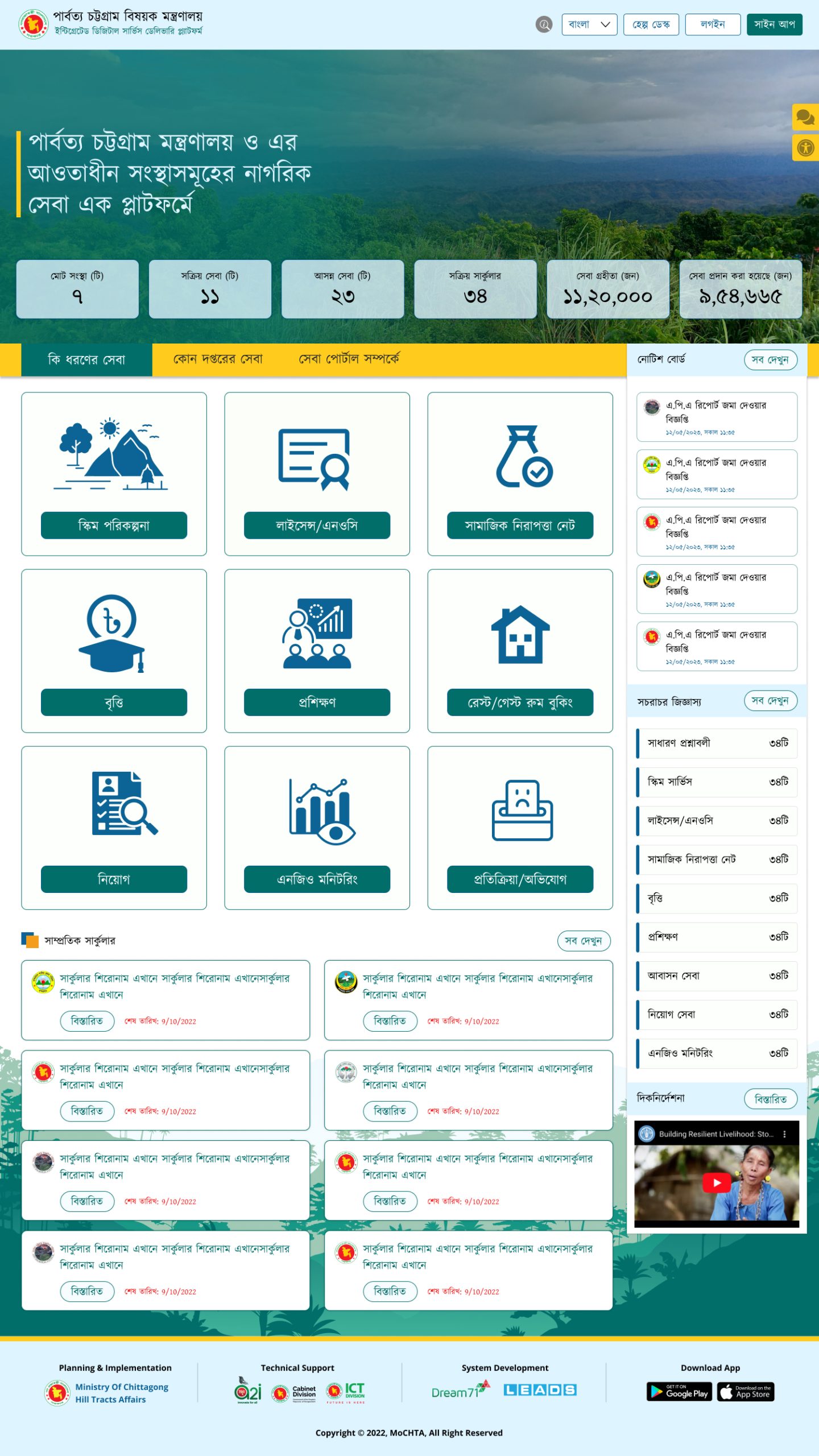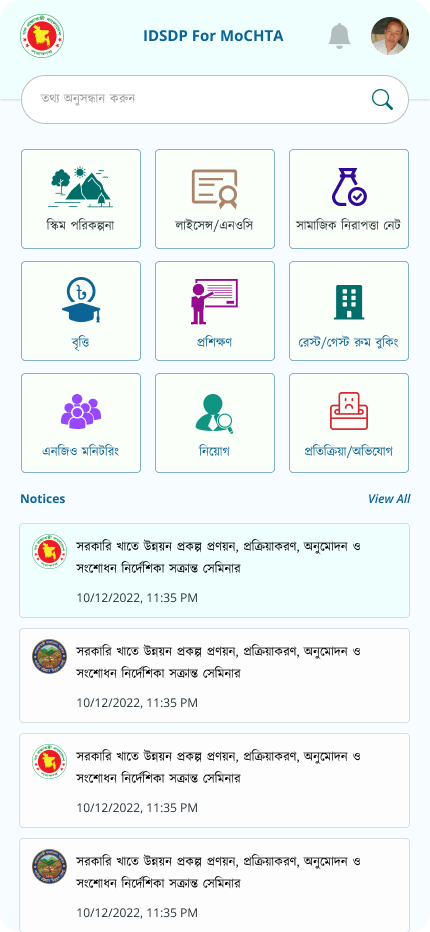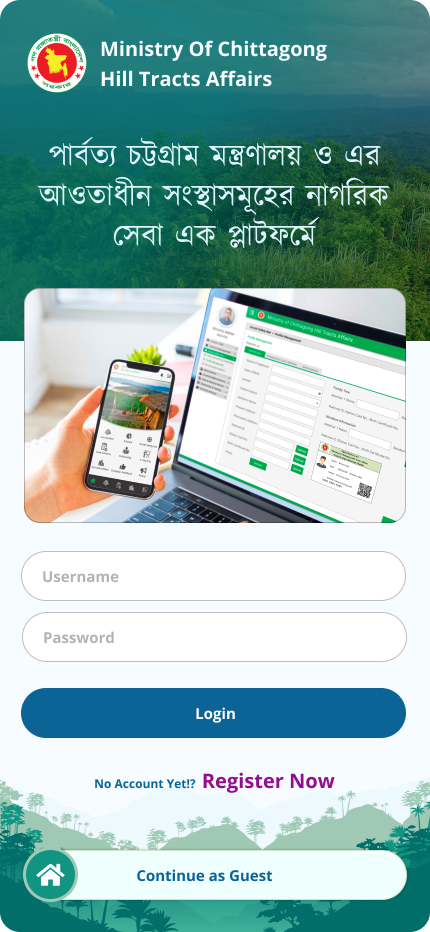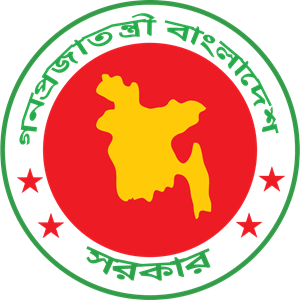
Ministry of Chittagong Hill Tracts Affairs
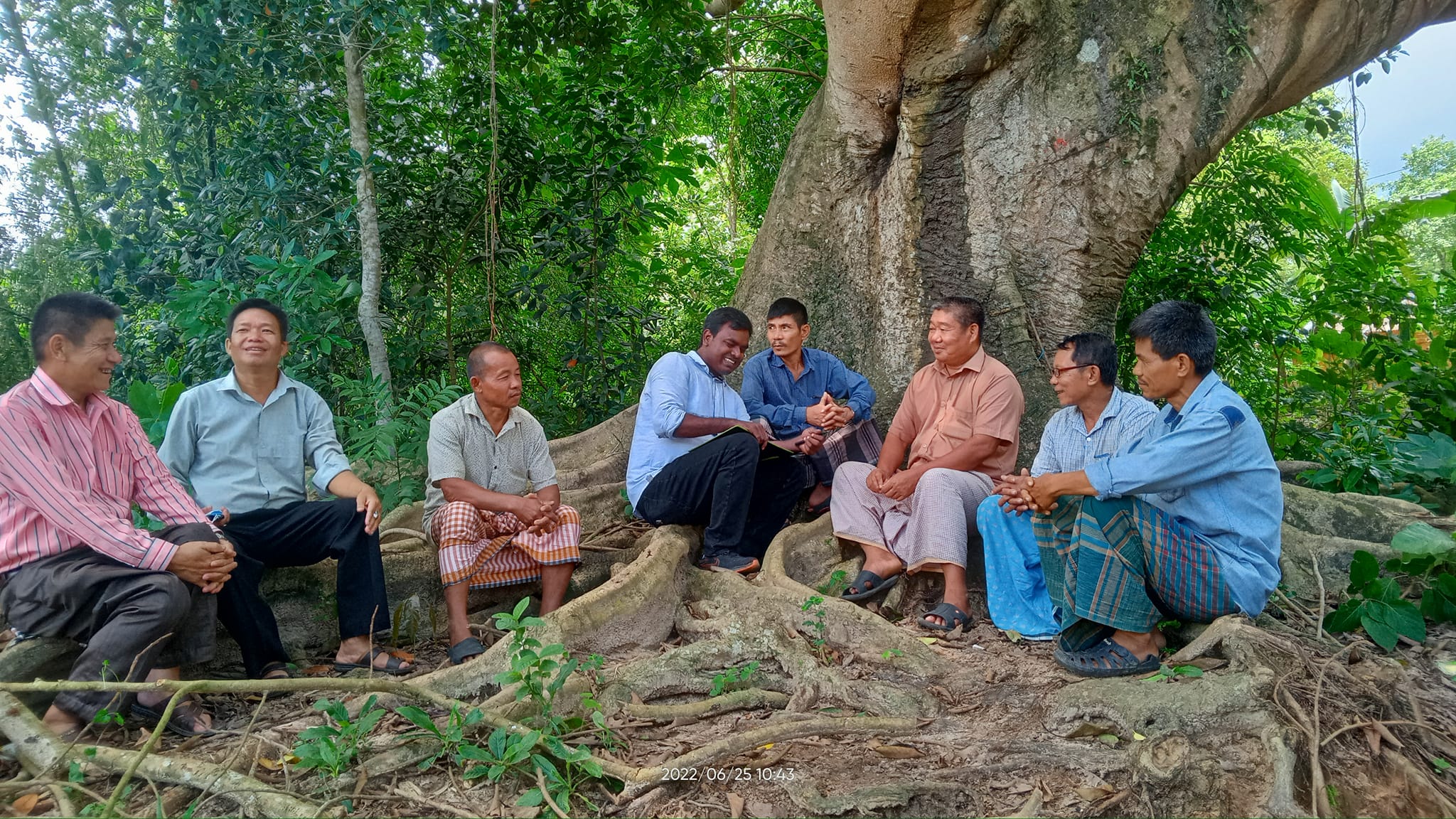
Project Background
MoCHTA is a driving force in Chittagong Hill Tracts’ development. Through tender processes and fund allocations, it enhances infrastructure and community welfare. Scholarships and skill programs underscore its commitment to education. Social safety nets ensure citizen well-being, and a dedicated guest house reflects convenience. Collaborating with NGOs and transparent recruitment solidify MoCHTA’s dedication to holistic progress.
Citizen Service Portal
The Honorable Prime Minister outlined Digital Bangladesh as having four key priorities – (a) developing efficient human resources for the 21st century; (b) connecting citizens in the ways most meaningful to them (c) taking services to citizens’ doorsteps; and, (d) making the private sector and market more productive and competitive through the use of digital technology.
To achieve the vision MoCHTA deploying an Integrated Digital Service Delivery Platform to its 6 offices. The target of the application software is to digitalize and centralized all the service provider organizations and service recipients in a virtual platform
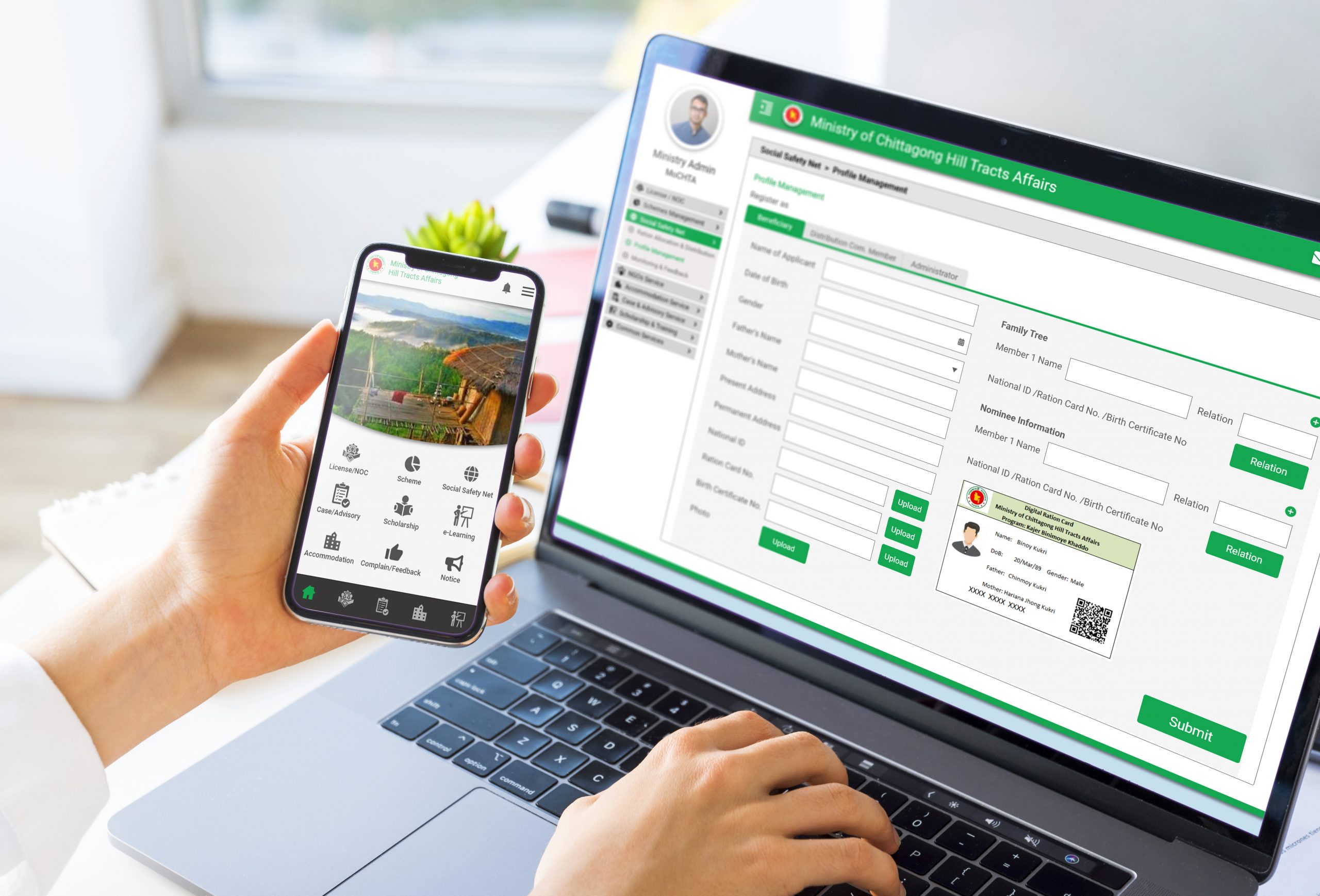
The Product
The Ministry of Chittagong Hill Tracts Affairs in Bangladesh is implementing a comprehensive Integrated Digital Service Delivery Platform across its six offices. This initiative aims to digitalize and centralize all service provider organizations and service recipients within a virtual platform, utilizing web and mobile applications for enhanced accessibility and efficiency.
The Problem
The office is struggling with issues such as paperwork, scheduling delays, and approval backlogs. Inefficiencies stem from the need for physical visits between departments and communication gaps. Public awareness programs are facing obstacles, and there is currently no streamlined process for handling appeals or inquiries. Additionally, the absence of monitoring and a help desk is impeding Ministry oversight and assistance.
The Goals
The plan modernizes government services with web and mobile apps, upgraded facilities, and centralized features. It includes scheme management and registrations for recipients, providers, and vendors, covering scholarships, training, social safety nets, NGO monitoring, recruitment, and accommodation. The goal is streamlined communication, digital signing, and a user-friendly support center to enhance the efficiency and accessibility of government services.
User research: Summary
Through 50-60 Qualitative and Quantitative Interviews, our user research aimed to uncover behavior, needs, pain-points, and motivations. Initial assumptions were challenged, revealing unexpected pain-points and diverse user motivations. Quantitative data validated certain assumptions, guiding feature prioritization. The insights gained will shape a user-centric product/service strategy, ensuring alignment with user expectations and addressing previously undiscovered aspects of user experiences.
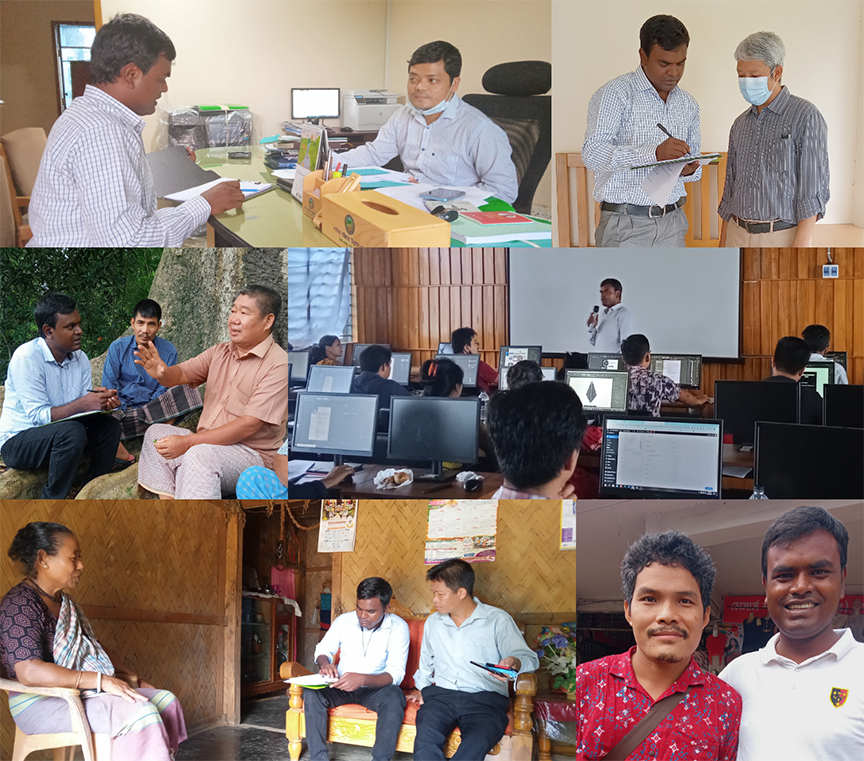
Pain Points
Administrative Hurdles
Administrative delays, ledger conflicts, and dependence on authorized letters pose communication obstacles, significantly hampering overall efficiency.
Complex Welfare Processes
Users encounter bureaucratic hurdles, hierarchy issues, and complications with paper-based schemes, affecting their access to welfare benefits.
Skills Development Gap
Limited training opportunities hinder public skill development, limiting personal and community growth.
Social Safety Struggles
Difficulties in understanding ration schedules, distant distribution points, and decreasing ration quantities contribute to challenges in ensuring an adequate food supply.
Problem Statement
Lokkhi Chandro is a service recipient who needs easy and user-friendly online software for applying and tracking government schemes and services because he is socially welfare-aware.
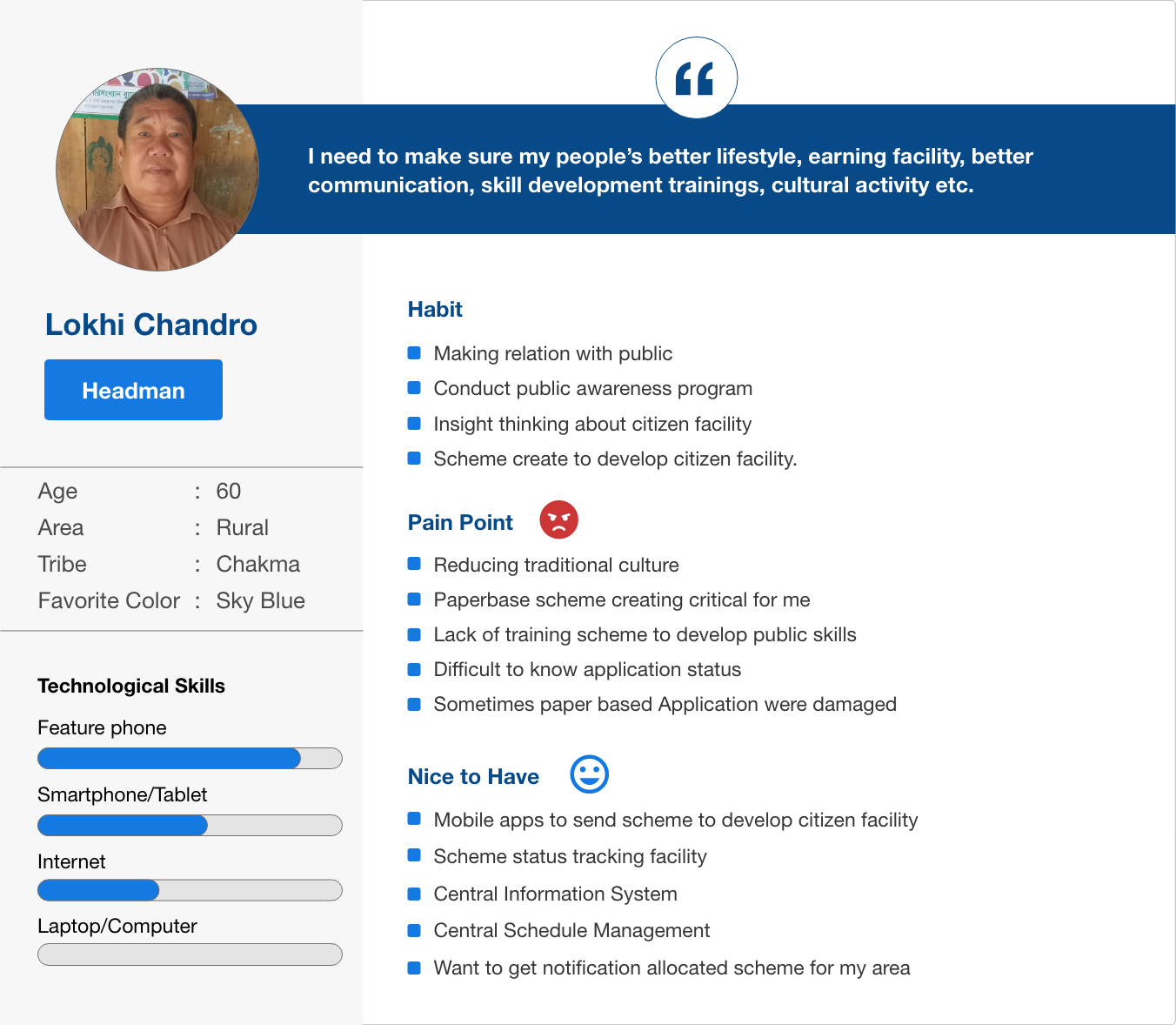
User Journey Map
Analyzing Lokkhi Chandro’s user journey highlighted the considerable benefits that users could derive from the availability of a dedicated online platform.
![User Journey Map [Template] (2)](https://meghcreations.com/wp-content/uploads/2024/01/User-Journey-Map-Template-2.jpg)
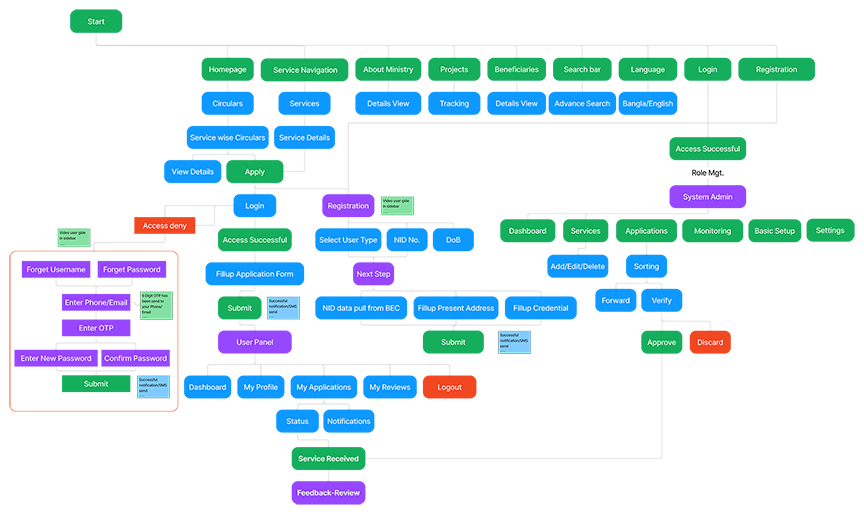
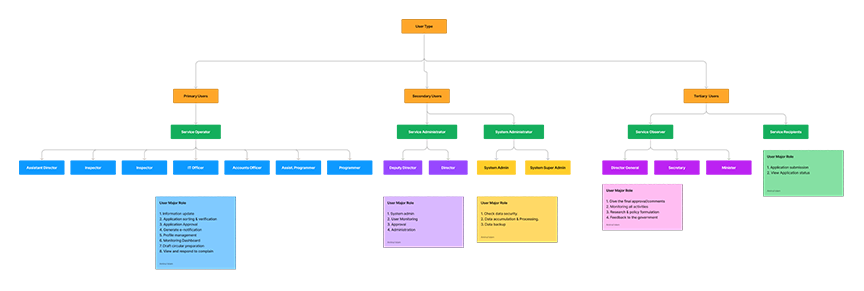
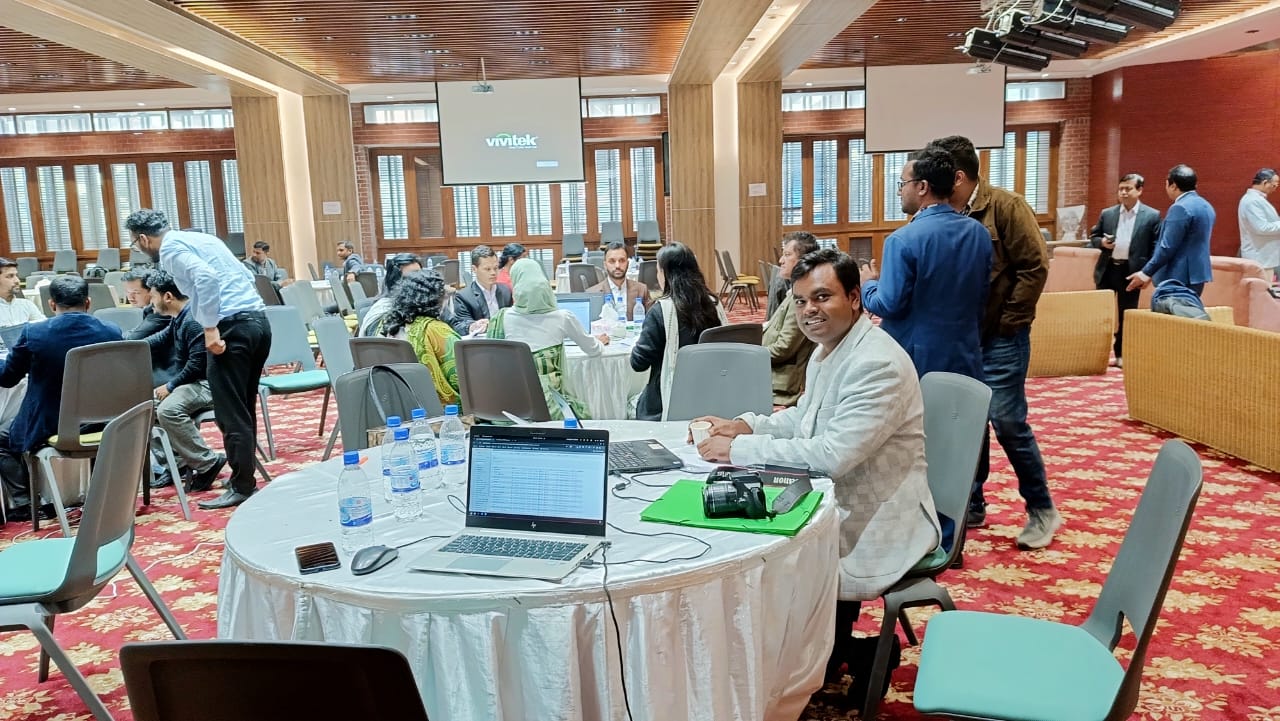
Usability Testing
55 participants, in both moderated and unmoderated sessions, performed tasks within the mock interface, emphasizing key functionalities. Interactions and feedback were closely observed and documented.

